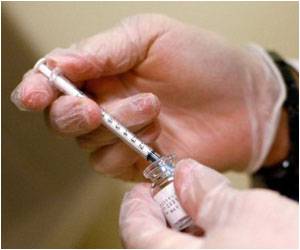Taking more than one antipsychotic can increase the risk for complications -drug interactions, side effects, metabolic disorders- without improving outcomes.

‘Antipsychotic polypharmacy continues at a high enough rate to impact nearly 10,000 patients with a diagnosis of schizophrenia each year in state psychiatric inpatient hospitals.’





"Antipsychotic polypharmacy continues at a high enough rate to impact nearly 10,000 patients with a diagnosis of schizophrenia each year in state psychiatric inpatient hospitals," write Glorimar Ortiz, Vera Hollen, and Lucille Schacht, of the National Association of State Mental Health Program Directors Research Institute (NRI) in Falls Church, Virginia, which supported the study. The results "provide insights into quality initiatives that could help further reduce the use of antipsychotic polypharmacy and reduce practices that are not consistent with best-practice guidelines," the researchers write. Despite New Best Practice Guidelines, Many Patients Receive Multiple AntipsychoticsThe study included data on more than 86,000 adult patients discharged from 160 state psychiatric inpatient hospitals during 2011. Data were obtained from the Behavioral Healthcare Performance Measurement System--a comprehensive proprietary national database maintained by the NRI, representing 80 percent of all US state psychiatric hospitals.
Most schizophrenia treatment guidelines recommend against using antipsychotic polypharmacy, or using it only as a last resort. Taking more than one antipsychotic can increase the risk for complications--including drug interactions, medication side effects, and metabolic disorders--without improving outcomes. More complex medication regimens may also increase the risk that patients won't follow their prescribed treatment.
In 2011, the Joint Commission introduced performance measures to reduce antipsychotic polypharmacy. Those standards defined some situations where using more than one antipsychotic is scientifically validated: multiple failed attempts at single-drug treatment, adjusting doses to work toward single-drug therapy, or to augment the effects of the antipsychotic drug clozapine.
The data showed that 12 percent of patients were discharged with a prescription for multiple antipsychotic drugs. Of the discharged patients who were prescribed at least one antipsychotic medication, 18 percent were prescribed more than one antipsychotic.
Advertisement
Two factors were identified as strong predictors of antipsychotic polypharmacy: a diagnosis of schizophrenia and an inpatient stay of 90 days or more. The researchers note that 40 percent of patients at state psychiatric inpatient hospitals have a diagnosis of schizophrenia, while nearly 20 percent experience a longer hospital stay--"suggesting a high-risk population needing special attention."
Advertisement
Source-Eurekalert











